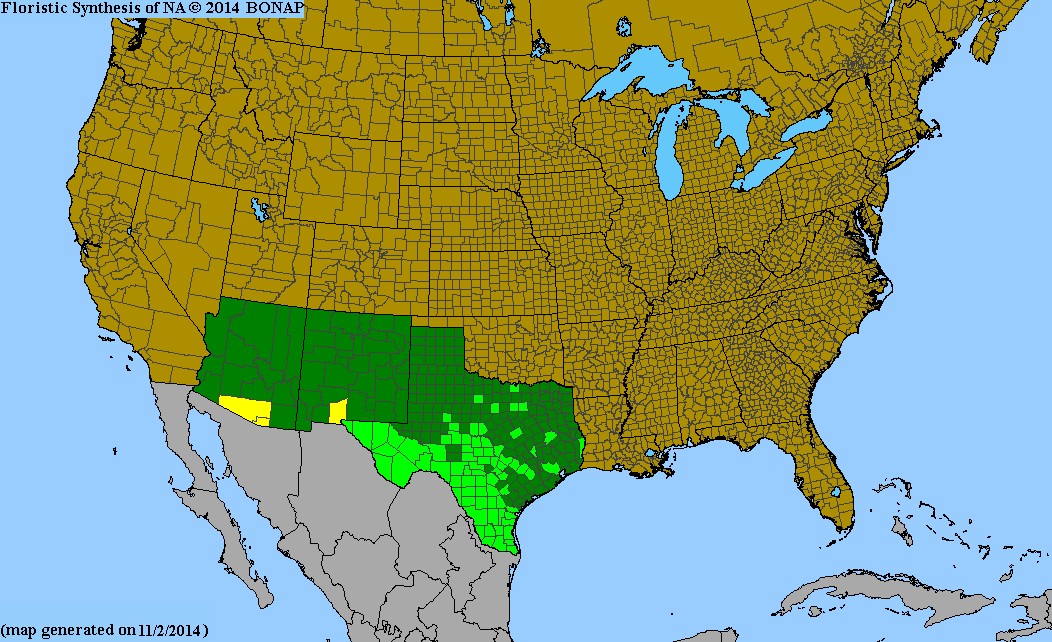Click on the images below to see larger versions.
| Scientific Name | Aloysia gratissima | USDA PLANTS Symbol |
|
| Common Name | Beebrush, Whitebrush | ITIS Taxonomic Serial No. |
|
| Family | Verbenaceae (Verbena) | SEINet Reference |
Click Here |
| Description |
Habitat: Dry sandy, limestone or granitic soils, rocky slopes, outcrops, limestone bluffs, and dry washes. Plant: Densely-branched shrub 3 to 9 feet tall, older branches gray, younger reddish with fine grayish-white pubescent hairs. Leaves: Elliptic to oblanceolate 1/4 to 1 inch long and up to 1/4-inch wide on short petioles; leaf axils often with fascicles (bundles) of younger leaves; margins entire or with 1 to 4 teeth on each side; tips pointed or rounded. Inflorescence: Many small white blossoms, each 1/8 to 3/16-inch wide in leafy panicles of many slender, elongated spike-like racemes, 3/4 to 2-1/2 inches long growing from leaf axils; 4-lobed corollas are white, sometimes with a purplish tinge. Bloom Period: March to November. References: "Manual of the Vascular Plants of Texas" by Correll and Johnston, "Wildflowers of the Texas Hill Country" by Marshall Enquist and SEINet. Note: Images 5391-5394 appear to be var. Schulzae because of the prominent single teeth on each edge of some leaves. |
BONAP Distribution Map
|
Texas Status: Native |








